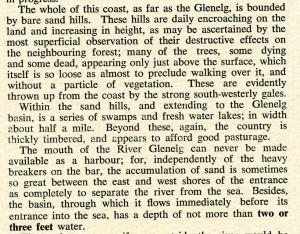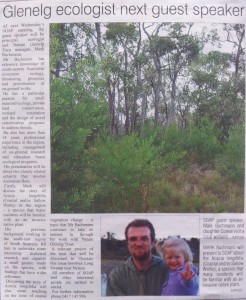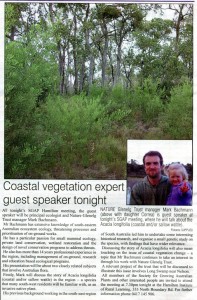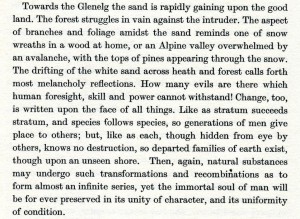Talking about Acacia longifolia and coastal change…
Last night I had the pleasure of heading across to Hamilton to present to the local SGAP (Society for Growing Australian Plants) Group. It was a great evening of discussion – special thanks to the group for making me feel so welcome.
As well as giving an overview of the complex story of Acacia longifolia (both Sallow and Coastal forms) in the region and what I have learned about the species over the last 15 years, we had a detailed look at the role the species has played in what have been remarkable changes in our coastal environment since European settlement.
To give you just a small taste of what we talked about, here is an example of how the coast adjacent to Long Swamp (near Nelson, SW Victoria) has changed over the last 170 years. Please click on the images to enlarge them…

Tyer’s description of Discovery Bay from 1839 – prior to any impact by European settlement. At this time, active, barely vegetated dunes were the original state of the coastal environment along this high energy coastline.

The first aerial image of Long Swamp and Discovery Bay from 1947 – note the dunes appear much like they were described over 100 years earlier. Unseen from this distance, and commencing prior to this image was taken, major efforts were being made to stabilise the dunes in the region (both sides of the border) particularly through the planting of Marram Grass.

Long Swamp and Discovery Bay in 2010 – note the encroachment of vegetation onto the dunes, and dramatic decline in dune activity. Accounts at the time suggest that Marram Grass would stabilise the mobile sand, and make it possible for coastal shrubs to establish and permanently stabilise the dunes. Key species in this “new” ecological process were Coast Beard-heath (Leucopogon parviflorus) and Coastal Wattle (Acacia longifolia var. sophorae). Outside of this image, Coastal Wattle has also undergone a dramatic expansion inland of the coast over recent decades, into a range of other habitats.




